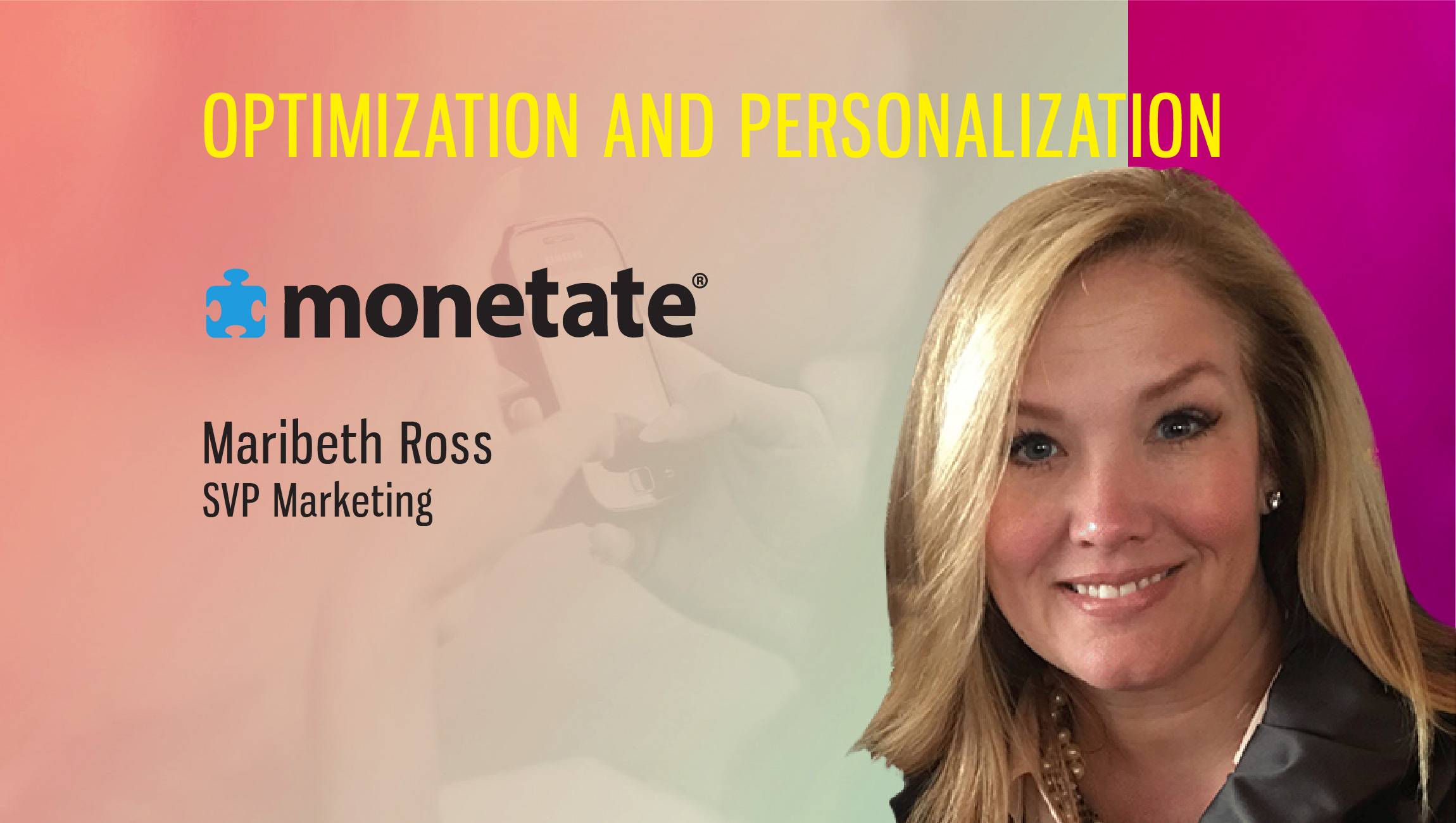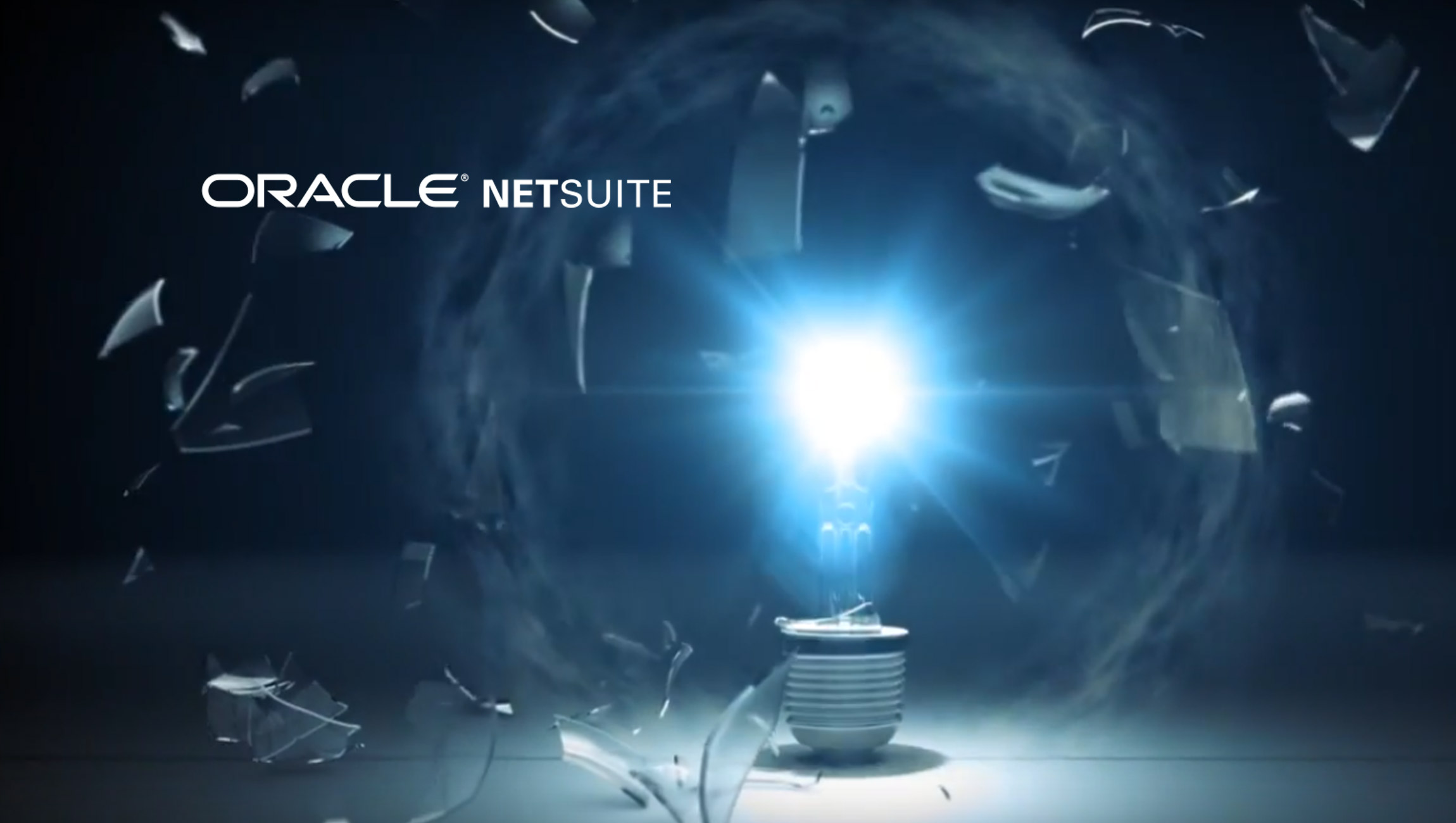Maribeth Ross
SVP Marketing, Monetate
The digital age has revealed to marketers how no two customers are alike in their interaction with a brand. The art of pleasing a customer is more complex than it ever was, and a good way to start is to leverage technology that measures what works, and what doesn’t across the buyers’ journeys. It’s imperative today for marketers to have a clear understanding of Personalization- Segmentation- Optimization, and Automation at various stages of the Customer Lifecycle. To tell us more about managing customer experiences at each level of this journey, we spoke to Maribeth Ross, SVP Marketing, Monetate.
Html code here! Replace this with any non empty text and that's it.
Tell us about your role at Monetate and the team/technology you handle.
I joined the Monetate team with more than 15 years of experience as a B2B marketer. My fascination has always been with cracking the code that makes customers engage, buy from and champion a brand, so personalization was an interest of mine even before joining. At Monetate, I hold the title of Senior Vice President of Marketing and I lead a team that focuses on the vital marketing functions.
We market personalization software that leverages AI and machine learning to create highly customized consumer experiences. The platform, called The Monetate Intelligent Personalization Engine, allows retailers and marketers to improve all facets of the customer experience across all channels through testing, segmentation, individualization, and product recommendations in real-time.
What is the “State of Omnichannel Personalization” in 2018?
Our recent Personalization Development Study found that more than 70 percent of those that reported year-over-year profitability increases also had a documented personalization strategy in place, while those that reported decreased profitability were more likely to not have one (less than 20 percent). And, not surprising due to the hotness of the topic, almost everyone is increasing their dedicated budget for personalization in 2018 and beyond.
We’re seeing that while investments in personalization are growing, data quality and system integration are gating factors that prevent brands from taking personalization to maturity. Organizations across all levels of maturity reported using a variety of different data sources to personalize communications. Few organizations are fully integrating offline and online data insights today, a fact that reflects the challenges of integrating data sources.
How would you define Personalization- Segmentation- Optimization, and Automation at various stages of Customer Lifecycle? How do you manage customer experiences at each level of this journey?
The most important thing I have learned about customer journeys in the digital age is that they are unique to the buyer, not linear, and are always in flux. No two buyers are exactly alike and, with the goal of pleasing the customer, brands need to be able to adapt to this. That said, no official “model” exists to demonstrate how to manage experiences across the journey. But it is worth noting that the technology and experience design needs to flex with the ever-changing journey for a specific buyer. Therefore, AI is so important to the equation; the ability to adapt the experience to the individual based on everything known about them through their relationship with a brand is something that a human could not predict or process.
In an omnichannel world, the device and channels matter less to the customer and this means that technology needs to reach across these devices and channels from a touchpoint perspective. The holistic customer experience and customer lifetime value need to be taken into consideration to deliver the best experience for an individual in a specific moment, whether that customer is buying, browsing, reviewing, or even returning a product in that interaction with the brand.
How could marketers benefit from real-time cross-channel behavioral data to improve recommendations engine?
Not only can marketers benefit from, but they NEED, real-time omnichannel behavioral data to provide the most personalized and relevant experience for customers. The entire point of personalization is to please the customer and build loyalty and lifetime value. And, frankly, a customer won’t be pleased with an experience that doesn’t recognize their latest action with a brand because it occurred with a different device or channel. When marketers can see how a customer behaves across all channels, it leads to a more complete picture of what will be the customer’s next ideal experience. Access to this data and the ability to analyze it across every available channel gives marketers the power to develop a unified marketing strategy that can provide the best customer experience online, in-app, on mobile browsers, through email, through the call center, or in-store.
How should marketers differentiate between REAL-Human behavior and bots? Do bot analytics impact personalization performance?
Technology has come extremely far in the last several years, especially for digital marketing. Bots are an example of the quickly evolving landscape, and their adoption is continuing to grow.
However, some considerations need to be taken into account for bot usage. Customers are always going to want a great experience. No matter how advanced a bot is, it will never be a replacement for human interaction, so selecting the right use case for bots is critical. And, as real human behavior varies from bots, it is important for marketers to differentiate the two. Less advanced bot technology may not have the AI and natural language processing needed to truly satisfy the customer in every instance. The level of the bot technology needs to be considered for specific use cases, so the experience doesn’t come off as impersonal.
What are your predictions for personalization intelligence technologies for marketers in 2018-2022?
The next four years will show tremendous growth in the adoption of personalization across channels, as well as more reliance on AI capabilities. Brands today are dipping their toes in the AI water and customer needs are changing with a growing expectation of personalization. And, as brands’ reliance on AI grows, the algorithms used will become more sophisticated and powerful. This growth and continued adoption is very exciting for the martech industry.
How do you leverage AI/ML and data science at Monetate? Which AI companies are you particularly interested in?
In these early stages of AI adoption, it is critical that marketers have visibility into how the AI works in the system, so they understand how the AI made the decisions it did and can use that information to inform their marketing strategy. This is one of the things that Monetate does tremendously well in both our ML-enabled testing and our AI-driven individual decisioning capabilities.
When it comes to ML/AI in the marketplace, there are hundreds of companies claiming to offer solutions with this tech, and many of them sound intriguing. What I’ve learned is that you need to ask to see where the AI resided in the UI because this will ferret out the buzzword users from the “real deal” AI companies.
Thanks for chatting with us, Maribeth.
Stay tuned for more insights on marketing technologies. To participate in our Tech Bytes program, email us at news@martechseries-67ee47.ingress-bonde.easywp.com



